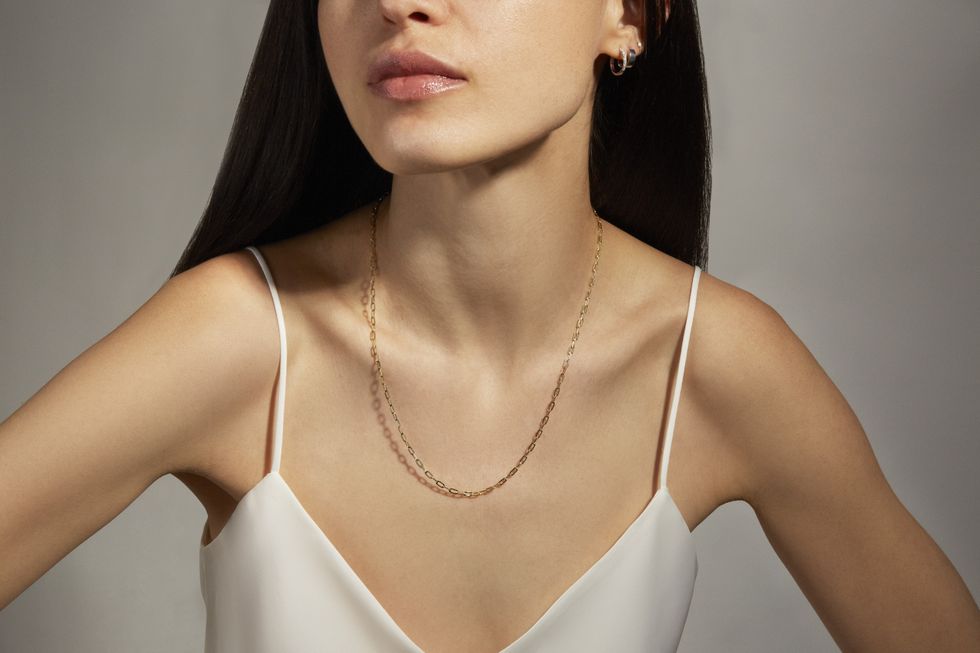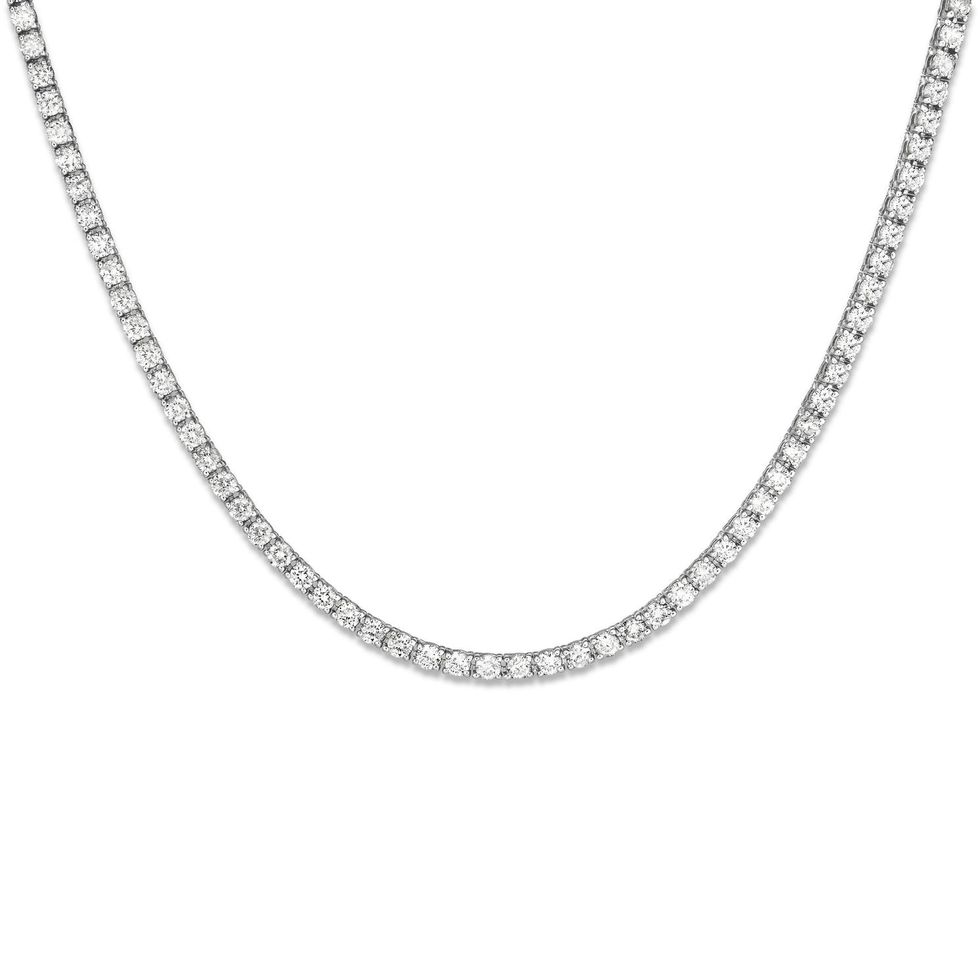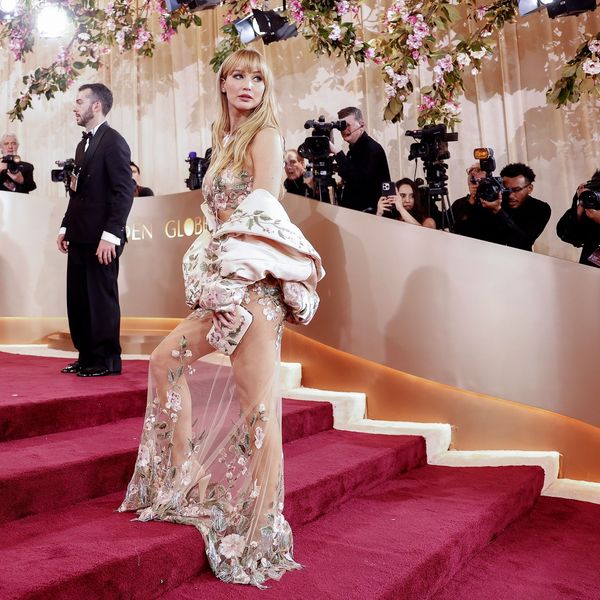Finally, A Tennis Necklace That Won’t Flip
Stone and Strand founder Nadine Kahane lets us in on the secret behind the brand’s latest problem-solving innovation.

Whether you’re a serial stacker or an understated accessorizer, diamond tennis jewelry is the true equalizer of personal style. A signature strand compliments any look, and nobody understands how special a place the diamond tennis necklace holds in a jewelry box better than Nadine Kahane, the founder of beloved fine jewelry brand Stone and Strand.
I’ve been on a quest for a signature tennis necklace for some time, but so far, the social media discourse around the style has deterred me from investing. Tennis jewelry has a tendency to flip backward during wear, essentially hiding the diamonds from view, and my algorithm has served me one too many negative testimonials of various brands for me to put too much trust in the purchase. That is, until I learned of Stone and Strand’s newest design, the aptly named Unflippable Tennis Necklace.
I had the chance to put the necklace to the test and can confirm that it truly does not flip. From my morning commute to playing actual tennis under the instruction of my husband, a former Division One player, the diamonds remained decidedly on display. My mission accomplished, I sat down with Kahane to understand how she succeeded
Caroline Good: I’ve seen a lot of people discussing the issue of tennis necklaces flipping on social media, but I haven’t seen any other brands release a necklace that they declare to be “unflippable.” Why is this such a tricky issue, and how did you solve it?
Nadine Kahane: “It started with a tennis necklace I’d bought from our collection, which doesn’t flip on everyone, but for some reason flipped continuously on me. I got frustrated with the diamonds constantly being backwards and worked with our jewelers to try to fix it. We spent a long time trying to do so—we shortened the number of links and looked at the weight distribution, and at the end of this exercise, the jewelers told me that their wives had worn it for days without anything happening. But when I got it back, I found that it flipped on me once again.
What we learned was that our existing tennis necklaces, like most of the those available on the market, can flip on different people depending on multiple factors: how prominent your collarbones are, the angle at which your chest sits, and how long the necklace is, which really determines where it sits on you. It can also be caused by human error if you’re putting it on the wrong way. We tested our tennis necklaces on everyone in the office and tried to figure out what percentage of the time they flipped. The answer was that our existing tennis necklace flipped about 50 to 60 percent of the time on different people. On some people, it was totally fine, and on other people, like me, this specific style flips all the time.
I felt like there had to be a better solution when our customers were investing in a piece. I’m not going to buy more than one or two tennis necklaces in my lifetime, and if I buy one, I want it to be really great and something that I’ll have forever— something that I’ll give to my kids, and something that I can wear comfortably. As a company founded by women, we wear-test our own jewelry, and it’s important that the jewelry that we offer is something that we wear every day and stand behind.
We then went into a long process to isolate the different technical reasons why tennis necklaces flip and tested new findings and components until we were able to come up with a version we were satisfied with. We were nervous about branding it “unflippable” and tested it a lot, but based on where the links are connected, at most, it will only turn slightly inwards. The links don’t allow it to completely turn backward.”

Courtesy of Stone and Strand
How long did the whole process take?
NK: "It’s been about two years."
I noticed you used ethically sourced natural diamonds for this necklace. Did you consider using lab-grown diamonds, or would you be open to doing a lab-grown version in the future?
NK: “Yes, we definitely would. We offer both lab-grown and natural diamonds, so it’s something that we’re open to. We don’t sell many different types of tennis necklaces, and we try to curate the best assortment of jewelry through our brand and designs. We’d rather offer two or three of the best types of tennis necklaces than a wide range, so we tried to think about if you were to buy just one tennis necklace as our customer—a working woman looking to indulge and splurge on a piece of jewelry for herself that will last forever—what would that look like? We thought very carefully about the carat weight, the type of diamonds, and the color of gold, and that’s how we came up with this necklace. I think lab-grown is a nice alternative, and our customers definitely wear both, but for us right now, we still see the value in natural diamonds when you’re investing in a forever piece, so that felt like the right first step if you were just to buy one necklace.”





